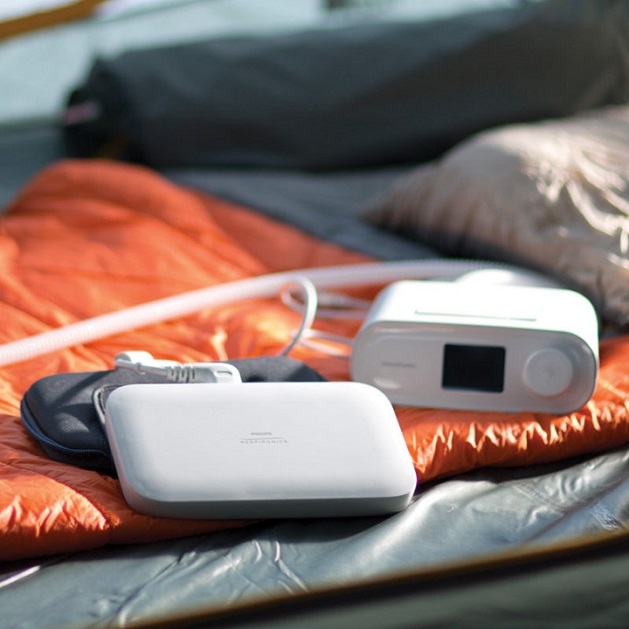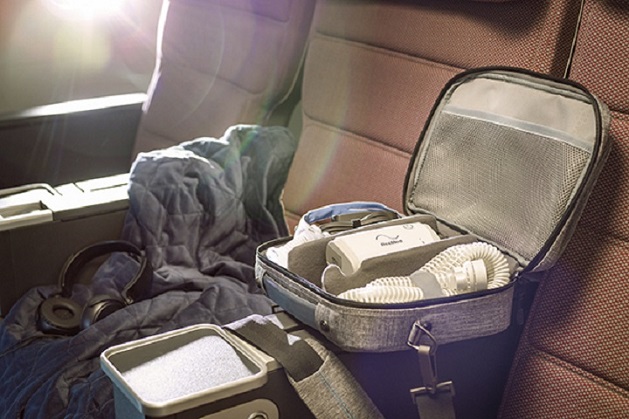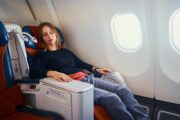CPAP has been proven as not only the best antisnoring device but also as a means to achieve a long-term beneficial outcome in the fight against sleep apnea. A CPAP machine, however, may not be the most convenient thing to use, especially when travelling. Even so, it doesn’t need to get in the way of your lifestyle. Fortunately, there are some thingfs that can be done that will make learning and mastering how to travel with sleep apnea easier than you could’ve imagined.
Get a 12 Volt CPAP
The newest travel CPAPs are premium, top-tier automatically adjusting CPAP therapy devices that intuitively amend pressure levels to suit your changing needs throughout the night and deliver therapy at the most comfortable temperature and humidity levels. You can choose between a black or white AutoSet 12 Volt CPAP (carry bag, heated tube, humidifier chamber and power supply unit are all supplied in this box). Although most have a 5-year warranty, bear in mind that all the accessories are not included in it, just the machine.
This intelligent climate control regulates moisture and temperature with you and the ambient environment in mind, preventing condensation. Additional wireless connectivity built into your machine can keep your Healthcare Professional always up to date. Engineered to be adaptive and easy to use, simply pressing one button will start therapy delivery and ensure an excellent night’s rest.

Some 12V CPAP machines use one of the most clinically advanced pressure algorithms in the world. Sleep onset detection begins therapy by delivering a low, highly tolerable pressure for greater patient comfort. Consequently, there is a gradual increase in the pressure to the prescribed level as required by your airway. Smart functions are designed to start your sleep apnea therapy as soon as you breathe into your mask. When you remove your mask, then, air delivery will automatically stop after a few seconds.
After all, if you want to create a home away from home while camping, you should always bring your 12 Volt CPAP with you. However, some worry about the air being much colder Although running CPAP tubes under the bedclothes may be enough to warm the air, a heated humidifier is much more efficient and will always come in handy.
Can I run my CPAP off a car battery is a common dilemma and it requires some planning. Newer CPAP machines can run straight from a battery and you’ll only need an adaptor from the car to the CPAP machine. Others can work with a suitable inverter that converts the 12V DC into normal mains power (240V AC).
You should know that not all of them are the same. Some may be more suitable than others for use with your CPAP machine. If you use the wrong one, it may shorten the life of the CPAP machine. This is because there is more stress on the motor. You’ll need to talk to the supplier of your CPAP to find out which inverters you need.
“How long will my CPAP run on a battery?” is another common concern and it depends a lot on what type of a CPAP machine you have and the pressure it provides. Those that use higher pressures or older CPAP machines use more power. Latest CPAP machines can run on a car battery for about 8 hours at the least. Just be careful not to get stuck with a flat battery.
Can CPAP be used without water? Once it runs out of water in its chamber, a CPAP will continue to function properly and safely but without supplying humidification. Can a travel CPAP be used all the time though? In spite of their rechargeable lithium-ion batteries, you’ll need a power source eventually, usually after a night or 2. Spending some nights without a CPAP machine won’t put you at risk but your breathing will start to worsen and your daytime symptoms will come back.
Carry On Your CPAP

Luckily, there are power points at airports that you can use with most CPAP machines. Also, you need to know what voltage you’ll have access to while onboard. Consult with the airline and later with your clinic or supplier to make sure that your 12 Volt CPAP will work at this voltage. How do you fly with a CPAP machine though? Firstly, you’ll need a medical certificate. Also, you might be allowed to use only specific units on board. Thus, preparations for your trip should be prompt as getting all proper documentation ready can take up your time.
Last but not least, if you’re worried about looking strange by using CPAP on the flight, don’t. Consider the alternative. Bothering everyone with loud snoring while you’re under-oxygenated is much more disturbing than looking weird. Secondly, always take your CPAP machine as part of your hand luggage in order to make sure it’s not damaged in transit. By explaining the situation to the airline employees, you’ll probably allow you to carry on an added piece of cabin baggage. Airlines are used to passengers with medical issues and equipment, hence, you’ll be understood and taken care of.
Keep it Clean
Although probably not your favourite pass time activity, learning how to clean a CPAP while travelling properly will save your health and other expenses. Take a soft piece of clothing damped in vinegar and clean all parts separately. Then, go over them with a clean towel and dish soap. You can do all of this in a basin or a small washtub with warm water.
Get an Extension Cord & Adapter
Always check the power sources in your destination of choice. Most machines these days are able to run on other voltages without modification due to their built-in “switch mode” power supply. Others need to be switched manually. However, some CPAP machines can’t run on other voltages. Thus, you might need to buy a transformer or possibly even a new travel CPAP. Don’t forget adaptor plugs.


